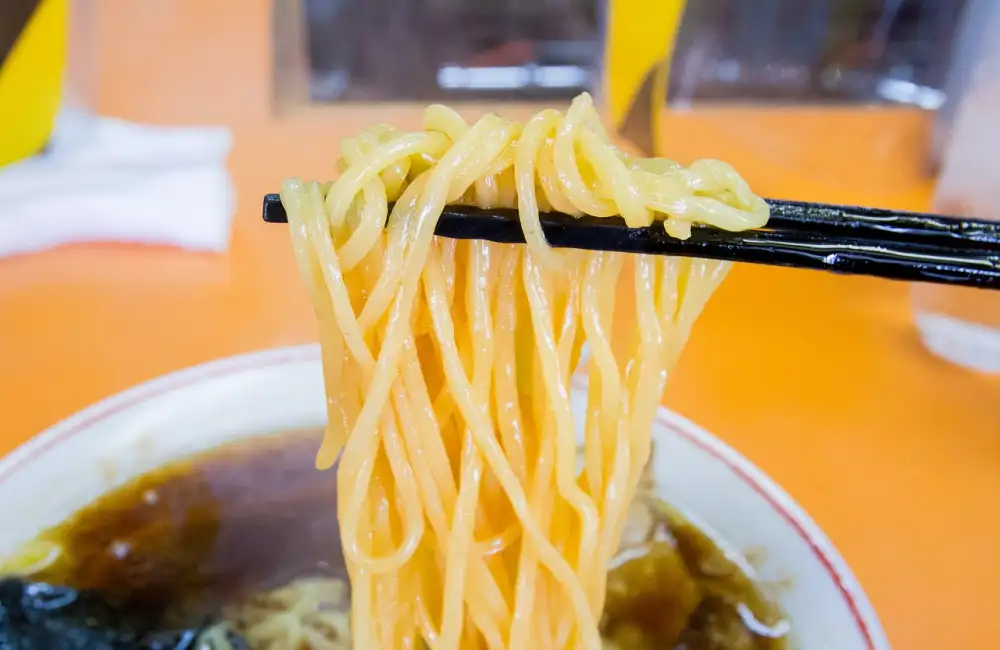Unlock the Savory Secrets of Shoyu: Exploring the Delights of Japanese Soy Sauce

Shoyu, also known as Japanese soy sauce, is a versatile and flavorful condiment that has been a staple in Japanese cuisine for centuries. With its rich umami taste and complex aroma, shoyu adds depth and complexity to a wide range of dishes. Whether you're a seasoned chef or an aspiring home cook, unlocking the savory secrets of shoyu will elevate your culinary creations to new heights. Join us as we delve into the world of shoyu and discover its delightful nuances.
Origins and History of Shoyu
Shoyu, also known as soy sauce, has a rich history that dates back to ancient Japan. Its origins can be traced back to the 7th century, when Buddhist monks brought soybeans from China and began fermenting them to create a savory condiment. Over time, the production methods and ingredients used in shoyu evolved, resulting in the distinct flavors we know today.
During the Edo period (1603-1868), shoyu became widely popular among the general population and was produced on a larger scale. It was during this time that different regions in Japan developed their own unique styles of shoyu, each with its own flavor profiles and characteristics.
Shoyu production involves a fermentation process that typically lasts for several months. Soybeans are combined with roasted wheat and koji (a fungus) to create a mash called moromi. This mixture is then fermented in large wooden barrels for an extended period of time, allowing the flavors to develop and deepen.
The introduction of industrialization in the late 19th century revolutionized shoyu production, making it more accessible to people around the world. Today, Japan remains one of the largest producers of shoyu, exporting it globally and influencing cuisines worldwide.
The history of shoyu is not only a testament to its culinary significance but also reflects the cultural heritage and traditions of Japan. It continues to be an integral part of Japanese cuisine and is celebrated for its umami-rich flavor and versatility in cooking.
Ingredients used in Shoyu
Shoyu, also known as Japanese soy sauce, is a versatile condiment that adds depth and umami to dishes. The key ingredients used in shoyu are soybeans, wheat, salt, and water. These ingredients are carefully selected and combined in a traditional fermentation process that gives shoyu its unique flavor profile. Soybeans provide the base for shoyu and are rich in protein and essential amino acids. Wheat is added to enhance the fermentation process and contribute to the complex taste of shoyu. Salt acts as a preservative and helps balance the flavors. Finally, water is used to dilute the mixture and create the desired consistency. Together, these simple yet essential ingredients create the foundation for the savory delights of shoyu.
Traditional Production Process of Shoyu
The production process of shoyu is a meticulous and time-honored tradition that has been passed down through generations in Japan. It begins with the careful selection of high-quality soybeans and wheat, which are then cooked and mixed together with koji, a type of mold culture. This mixture is left to ferment for several days, allowing the koji to convert the starches in the soybeans and wheat into sugars.
After fermentation, saltwater brine is added to the mixture, creating a rich and flavorful liquid known as moromi. The moromi is then aged in wooden barrels for months or even years, during which time it undergoes further fermentation and develops its complex taste profile.
Throughout the aging process, the moromi is carefully monitored and periodically stirred to ensure proper fermentation. The natural enzymes present in the koji break down proteins and carbohydrates, resulting in the deep umami flavor characteristic of shoyu.
Once the aging process is complete, the fermented mixture is pressed to extract the liquid, which is then filtered to remove any impurities. The resulting liquid is pure shoyu, ready to be bottled and enjoyed.
This traditional production process requires patience and skill but yields a soy sauce that is unmatched in depth of flavor and complexity. It showcases the artistry and dedication that goes into creating this beloved condiment.
Different Types and Varieties of Shoyu
Shoyu, also known as Japanese soy sauce, comes in various types and varieties. The most common types include koikuchi (dark soy sauce), usukuchi (light soy sauce), tamari (wheat-free soy sauce), and shiro (white soy sauce). Koikuchi is the standard variety, with a rich umami flavor and deep color. Usukuchi has a lighter taste and is often used in delicate dishes. Tamari is made without wheat, making it suitable for those with gluten intolerance. Shiro, on the other hand, has a sweeter taste and is commonly used in marinades and dressings. Each type adds its unique flavor profile to dishes, allowing for endless culinary possibilities.
Health Benefits of Shoyu
Shoyu, the beloved Japanese soy sauce, not only adds a burst of umami to dishes but also offers various health benefits. Packed with essential amino acids, shoyu aids in muscle growth and repair. It contains antioxidants that help fight free radicals and reduce the risk of chronic diseases. Shoyu is also a good source of iron, promoting healthy blood circulation. Additionally, it contains probiotics that support gut health and boost the immune system. Incorporating shoyu into your diet can be a flavorful way to enhance your overall well-being.
Culinary Uses of Shoyu
Shoyu is a versatile ingredient that adds depth and complexity to a wide range of dishes. Its umami-rich flavor enhances the taste of soups, stews, and marinades. It can be used as a dipping sauce for sushi, sashimi, or dumplings, adding a savory kick to each bite. Shoyu also works wonders as a seasoning for stir-fries and fried rice, giving them an irresistible umami boost. Additionally, it can be drizzled over steamed vegetables or used as a glaze for grilled meats and seafood. With its ability to elevate the flavors of both traditional Japanese cuisine and international dishes, shoyu truly unlocks endless culinary possibilities.
Tips for Choosing and Storing Shoyu
When it comes to choosing and storing shoyu, there are a few tips to keep in mind. Firstly, opt for high-quality, traditionally brewed shoyu as it will have a richer flavor. Look for brands that use natural ingredients and avoid those with additives or preservatives.
When storing shoyu, keep it in a cool, dark place to preserve its flavor and quality. Avoid exposing it to direct sunlight or extreme temperatures. Once opened, refrigerate the bottle to extend its shelf life.
To prevent contamination, always use a clean spoon or pourer when dispensing shoyu. This will help maintain its freshness and prevent any unwanted flavors from seeping in.
Lastly, pay attention to the expiration date on the bottle and consume the shoyu within that timeframe for optimal taste. By following these tips, you can ensure that your shoyu remains delicious and ready to enhance your culinary creations.
Popular Shoyu Recipes
1. Teriyaki Chicken: Marinate chicken in a mixture of shoyu, ginger, garlic, and honey. Grill or bake until tender and glazed.
2. Miso Soup: Combine shoyu with miso paste, tofu, seaweed, and vegetables for a comforting and nutritious soup.
3. Stir-Fried Vegetables: Add a splash of shoyu to your stir-fried vegetables for an umami-rich flavor boost.
4. Shoyu Ramen: Create a flavorful broth by simmering shoyu with chicken or vegetable stock. Serve with noodles, sliced pork, soft-boiled eggs, and green onions.
5. Shoyu Glazed Salmon: Brush salmon fillets with a mixture of shoyu, brown sugar, and garlic. Bake until the glaze caramelizes.
6. Shoyu Fried Rice: Sauté cooked rice with diced vegetables, scrambled eggs, and a drizzle of shoyu for a quick and tasty meal.
7. Shrimp Tempura: Dip shrimp in a batter made with shoyu before frying until crispy and golden.
8. Grilled Vegetables with Shoyu Dressing: Toss grilled vegetables in a dressing made from shoyu, sesame oil, rice vinegar, and honey.
These popular recipes showcase the versatility of shoyu in enhancing the flavors of various dishes while adding depth and complexity to your culinary creations.
In conclusion, Shoyu is a versatile and flavorful ingredient that adds depth and complexity to a wide range of dishes. Its rich history and traditional production process make it a staple in Japanese cuisine. With its umami-rich taste and numerous health benefits, Shoyu is not only delicious but also good for you. Whether you're using it as a marinade, dipping sauce, or seasoning, Shoyu will elevate your culinary creations to new heights. So why not embrace the flavorful world of Shoyu and unlock the secrets of this delightful Japanese soy sauce?
Published: 08. 12. 2023
Category: Food



